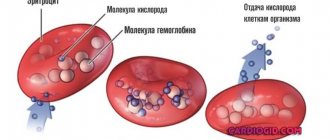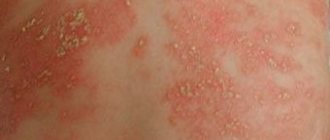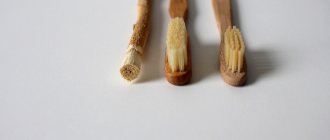What is wax plug in the ear?
The cerumen plug itself is a collection of ear secretions produced by the sulfur glands of the ear canal, which leads to blockage of the ear canals.
But did you know that the presence of earwax is a normal physiological process? Moreover, sulfur protects the ear canal from dust and small particles; the fats in its composition prevent the ear from getting wet and do not allow pathogenic fungal microflora to multiply, thereby performing an antiseptic function.
As a rule, in a healthy person, sulfur is independently removed due to movements of the temporomandibular joint when talking or chewing. However, in some cases, sulfur accumulates in the ear canal, clogs it, forming a plug and, thus, often causes unpleasant sensations in a person.
Phytocandles or funnels
This medicine for wax plugs can be bought at a pharmacy. When used correctly, it will not cause any discomfort and will not only remove the plug from the ear, but will also prevent the development of inflammation, and will also have a calming effect on the nervous system. The funnel, which is also called a candle, during the combustion process will create the necessary draft to remove the plug and will warm up the sore ear. It is useful to use this remedy not only for traffic jams, but also for inflammation, when heating is allowed. Candles can improve the health of the ear, but only if there is no purulent process, damage to the ear canal, damage to the integrity of the eardrum, otitis, fungal infection or allergy to wax.
The patient lies on his side with the ear in which the plug is located facing up. They cover his head with a cloth so that only his ear is exposed. A phyto-funnel (phyto-candle) is inserted into the auditory canal with its narrow end and set on fire. The cut should burn to the level marked on it by the manufacturer. They extinguish it in water, preventing it from burning any more. If you unwrap the rest of the candle, you will see an elongated plug in it. Thanks to the heat, the wax softens well, and the vacuum effect removes it from the ear canal. This procedure also helps improve nasal breathing, which is useful for viral infections.
So what causes wax plugs to form?
- The very first and most common cause of earwax in the ear is the use of cotton swabs for ear hygiene. Many people, using cotton swabs irrationally, push and compact earwax further, which provokes the formation of a plug. You can clean out wax only at the entrance to the ear canal, otherwise inserting sticks and turundas can damage the skin, injure the eardrum, and disrupt the natural process of self-cleaning.
- Too much sulfur can be produced due to overactive sulfur glands. The auricle does not have time to clean itself and wax quickly accumulates. Increased secretion of the sebaceous glands can be a consequence of high cholesterol levels in the blood, as well as diseases such as eczema, atopic dermatitis, chronic otitis media and external otitis.
- Large amounts of wax can be produced as a result of overzealous ear care. Of course, you need to wash your ears, but an excessive desire for cleanliness, when the patient cleans his ears with cotton swabs every day until they shine, leads to skin irritation, and very often to an increase in sulfur formation.
- If the anatomical ear canal is tortuous and narrow, then accumulation and compaction of wax into the ear plug is also possible. This is not a pathology when the ears are prone to the accumulation of wax, however, more attention should be paid to the hygiene of such ears.
- It is not common, but it happens that patients' earwax has increased viscosity. In addition, rapid hair growth in the ear canal, headphones, hearing aids, very dusty conditions, and dry indoor air can also cause wax plugs in the ears.
Washing
The procedure is carried out using a large-volume syringe, as well as saline or antiseptic solution. The second option is better, as it will prevent inflammation from occurring due to infection. As an antiseptic solution for washing, it is best to use a weak solution of manganese or a solution of furatsilin, prepared at the rate of 2 tablets per 1 liter of water.
Before washing the ear, wipe it with chlorhexidine. After this, bending over the sink with the affected ear down, pour liquid into it in small portions. There should be no pain during this procedure. When it appears, rinsing is stopped immediately. If it is not possible to wash the cork three times, stop trying to remove it on your own.
The main symptoms of wax plug
Often, the patient may not realize that there are wax plugs in the ears, because they do not present any particular discomfort. However, symptoms such as tinnitus, autophony (resonance of one's own voice), a feeling of fullness and, finally, severe hearing loss signal the formation of earwax.
Often, when water gets into the ear, the wax mass swells and completely blocks the ear canal. If the formed plug is located near the eardrum, irritation of the nerve endings occurs and the patient may feel nausea, dizziness and headache.
It is also worth remembering that due to prolonged irritation of the eardrum, inflammatory processes may develop in the middle ear, where our hearing aid is located.
How to remove a cork at home
Removing ear plugs at home is a last resort, which can be resorted to only if there is no way to visit a doctor. If, after several attempts, a positive result has not been achieved, treatment on your own must be stopped and you must find an opportunity to contact an otolaryngologist.
There are three ways to remove a lump of wax from your ear yourself:
- washing the ear canal using an antiseptic solution and a syringe without a needle;
- phytocandles for sulfur plugs - they create a vacuum effect and thanks to this, like a vacuum cleaner, they pull out the plug;
- drops from earwax plugs - a special composition allows you to soften and dissolve the plug, after which it will be removed from the ear.
If these procedures are carried out carefully, they cannot cause harm. Unfortunately, if the plug is very dense, it may not be possible to remove it using home remedies. This phenomenon is most often observed if the lump is in the ear cavity for a very long time, or if it consists not of compacted wax, but of crumpled desquamated epithelial cells. In the latter case, the formation is tightly connected to the walls of the ear canal, and therefore removal of such a lump is possible only by a doctor using local anesthesia and further antiseptic treatment of damage to the ear mucosa.
When should you see a doctor?
If a person notices any of these symptoms, he needs to visit a doctor. An experienced otolaryngologist will examine the patient using an otoscope to determine if a problem exists.
How to get wax plug? Your doctor may be able to remove the wax yourself using a device called a curette. In some cases, the specialist will prescribe wax softening medications or drops suitable for use at home to soften the wax before removing it. You don’t need to buy special medications yourself - this can make your health worse.
When should you see a doctor?
If a person notices any of these symptoms, he needs to visit a doctor. An experienced otolaryngologist will examine the patient using an otoscope to determine if a problem exists.
How to get wax plug? Your doctor may be able to remove the wax yourself using a device called a curette. In some cases, the specialist will prescribe wax softening medications or drops suitable for use at home to soften the wax before removing it. You don’t need to buy special medications yourself - this can make your health worse.
The best drops for ear plugs
| Nomination | Place | Name | Price |
| Water- and oil-based preparations | 1 | Aqua Maris Oto | 310 ₽ |
| 2 | Otinum (choline salicylate) | 325 ₽ | |
| 3 | Hydrogen peroxide 3% | 13 ₽ | |
| Oil-based preparations | 1 | Remo-Wax | 485 ₽ |
| 2 | A-cerumen (surfactant) | 522 ₽ |
Hydrogen peroxide
You can remove ear plugs at home using hydrogen peroxide. The solution should be 3% to avoid burning the ear canal.
It is necessary to fill the pipette with peroxide and take a lying position. Apply drops to the ear and cover with a cotton swab; do not push the swab deep into the ear.
Immediately after instillation, a hissing sound and a slight tingling sensation may appear in the ear. This is a reaction of hydrogen peroxide, if there is no pain, there is no need to worry.
It is necessary to drip into the ear for a week. The cork will dissolve and come out on its own.
Dissolving plugs with ear drops
Finally, let's move on to the pharmacological part. Let's look at what medications can soften and dissolve earwax, and what drops are used. We will assume that the drops will work simply by dripping into the ear. And then calmly, by turning your head, everything flows out on its own. We will not consider liquids and solutions that need to be injected into the ear under pressure, for example, using the same syringe.
In outpatient settings, at home, there are drops, and there are sprays that penetrate the ear under pressure. But the pressure in the spray can is incomparable to the pressure in the Janet syringe; the spray is produced solely for convenience. No mechanical energy is created from the spray canister; the effect depends solely on the chemical composition and temperature of the medicine.
There are several such effective drugs on the modern market, in the form of drops that allow you to dissolve and remove ear plugs. As a rule, they are contraindicated for children under 2.5 years of age. It should be remembered that complete dissolution of sulfur plugs does not occur in 100% of cases: according to some sources, the effectiveness of using drops alone does not exceed 70%. Therefore, it is advisable to still see an otolaryngologist after using them at home in order to finally remove the plug.
This review presents drugs that are sold in pharmacies without a prescription. The inclusion of any drug in the list, or absence from the list, does not constitute advertising or anti-advertising. All drops are taken from national and international recommendations, instructions and protocols for removing wax plugs. The information is for informational purposes only; the source of information is the official instructions for drops and sprays for removing ear plugs, which are freely available. For each drug, the name, characteristics, and price range are given, relevant for November 2021 for pharmacies of all forms of ownership in the Russian Federation.
Water- and oil-based preparations
Preparations from the group of solvents are not capable of eliminating hard and long-standing sulfur plugs; at best, they can only slightly soften it. They should be used if the wax plug has a soft, plastic consistency and has recently formed. If the cork is very dense, then it is better not to waste time on these products, since they are not designed specifically for dissolving traffic jams. However, in uncomplicated cases, you can try to start with them.
Aqua Maris Oto
Rating: 4.9
This drug is nothing more than ordinary sea water; it is sold in 100 ml bottles. Water should be dripped into the external auditory canal using a special dispenser nozzle. To do this, tilt your head to the side, to the right or left, depending on your ear. Insert the tip of the bottle into the ear canal and press the nozzle for several seconds. Then you need to wipe off the excess liquid with a napkin and repeat the procedure for the other ear. This is how symmetrical, routine hygienic care of the external auditory canal is performed.
In adults and children, this remedy can be used once or twice a day, no more than three times a week, starting from the age of 4. In the event that there are sulfur plugs, or excessive formation of sulfur, then such care is recommended daily. This drug is produced by the Croatian company Jadran, and sea water is taken from ecologically clean areas of the Adriatic Sea, from great depths. The cost of a 30 ml can of Aqua Maris in the form of a metered spray will cost from 230 to 270 rubles.
Advantages and disadvantages
Since Aqua is ordinary sea water, it allows you to care for the inner surface of the external auditory canal, promptly wash away exfoliated remains of the epithelium, and remove fresh sulfur before it becomes saturated with lipids and becomes water insoluble. But as soon as the sulfur became hydrophobic and began to form plugs, sea water is unlikely to cope with such a dense and dried plug.
In addition, Aqua Maris Oto, both spray and drops, are contraindicated in the presence of intense inflammation, perforation of the eardrum and in case of unknown otalgia, that is, pain in the ear. All these situations require urgent medical consultation. Also, in order to avoid injury, you should not insert the tip into the external auditory canal with great force and do not use cotton swabs to clean the external canal.
Therefore, we can consider that this remedy is auxiliary; it can help remove soft plugs and prevent their formation, but the drug will not cope with dense plugs. It’s also a little unusual that a small amount of sea water costs so much. It turns out that a consumer at a pharmacy will pay 1,750 rubles for a glass of sea water, if we compare the volumes. Apparently, sea water, even from ecologically clean places in the Adriatic, will not cost so much, otherwise it can be easily replaced with water salted to a strength of 33 ppm.
Otinum (choline salicylate)
Rating: 4.8
These are original ear drops from the German company Meda pharma, which are produced in Poland. This is a solution of choline salicylate, 20% strength, drops in a dropper bottle. 10 ml of such ear drops costs from 205 to 400 rubles.
Choline salicylate is a derivative of the very first non-steroidal anti-inflammatory compound, salicylic acid. If it is dripped into the external auditory canal, it will fight inflammation and relieve pain. Like Aspirin, Paracetamol, or Xefocam, these drops inhibit the activity of the cyclooxygenase enzyme, which is responsible for inflammation. It is important that choline salicylate also kills fungi and fights microbes. If you drop it into the ear, it will not be absorbed into the blood, that is, the drops do not have a systemic effect.
Otinum is indicated if a person has ear pain due to various types of otitis, for example, acute or chronic, as well as external otitis. The second indication for use is softening hardened ear wax and plugs before removing them. It should be emphasized once again: Otinum is not intended to dissolve sulfur plugs, but only to soften them. Therefore, a doctor who was unable to remove the wax plug during an appointment may prescribe Otinum drops for a few days, and then, using a Janet syringe, wash the plug from the ear with a tight stream of water.
These drops should be used to soften wax plugs, 3-4 drops in the desired ear twice a day for 4 days. If we are talking about the inflammatory process, painful sensations and otitis media, then drops are dropped not twice a day, but four times, but not longer than three days. Before putting drops into your ear, you need to warm the bottle to room temperature, or even better, to body temperature, holding the drops in your hands. As usual, the drops are given to the person lying on their side so that the external auditory canal faces upward.
Advantages and disadvantages
The big advantage of this drug is that it is indicated not only for dissolving the softening of sulfur plugs, but also fights inflammation, disinfects and produces an analgesic effect. Therefore, these drops will be a good choice for those patients who have “ear problems” and who suffer from chronic otitis media with various exacerbations. Then the relatively high price of these drops will be justified.
It is also important that there is no need to adjust the dose for the elderly, children, and patients with impaired kidney and liver function. Side effects may occasionally include hypersensitive reactions in the form of itching and redness of the skin of the external auditory canal. The official instructions remind you that this remedy should not be used if the eardrum is perforated. Otinum is contraindicated in case of intolerance to NSAIDs (aspirin asthma, nasal polyposis). It is not prescribed during pregnancy, during breastfeeding, or under the age of 1 year.
Hydrogen peroxide 3%
Rating: 4.7
It is strictly forbidden to use hydrogen peroxide with a strength higher than 3% for instillation into the ear. Hydrogen peroxide is an antiseptic and can stop bleeding, albeit small, capillary bleeding. Hydrogen peroxide is a unique compound in which the molecule has very weak bonds between hydrogen and oxygen. As soon as hydrogen peroxide comes into contact with any protein, biological fluid (blood and pus, exudate, even saliva), active oxygen is immediately released, which has a disinfecting effect. Pure oxygen does not kill microorganisms, like a powerful antiseptic, it simply temporarily reduces their number, and in this regard, oxygen is a weak antiseptic. But hydrogen peroxide is perfectly capable of mechanically cleaning wounds and inactivating various organic compounds.
That is why hydrogen peroxide is indispensable for washing various wounds, including postoperative and deep ones. And in the clinic of ENT diseases, it is widely used for instillation into the external auditory canal, of course, provided that there is no perforation of the eardrum.
Hydrogen peroxide can be purchased at absolutely any pharmacy. At the same time, despite its high efficiency and versatility of use, its cost can be considered negligible compared to other drugs. One 100 ml bottle can be purchased for less than 10 rubles, this is an absolute record.
It is advisable to use hydrogen peroxide to soften earwax once or twice a day for 3 days before the final visit to the ENT doctor. Peroxide must be warmed to body temperature to avoid unpleasant sensations when instilled into the ear. As soon as warm hydrogen peroxide is dropped into the ear, it begins to “boil” there. The feeling is that it is bubbling, bubbling, and heating up further. This is indeed true, at this time an exothermic reaction occurs: the peroxide interacts with organic substances, bubbles of the resulting oxygen burst out of it, releasing heat. Thus, hydrogen peroxide cleanses and disinfects the external auditory canal, and softens the wax plug.
Advantages and disadvantages
As in previous cases, hydrogen peroxide is water-based drops, and the dense sulfur plug is insoluble in water, and therefore the most that peroxide can do is soften it slightly. But young and soft sulfur plugs can be fragmented into separate pieces using hydrogen peroxide, which can then be easily washed with a Janet syringe. In addition, hydrogen peroxide is extremely cheap, widely available, and should be in every home medicine cabinet, from disinfecting minor wounds to stopping minor bleeding, such as shaving cuts. Therefore, we can safely recommend this cheap and very important drug; it will not be superfluous.
How to prevent problems with sulfur production?
To prevent disruption of wax production, do not insert anything into your ears to clean them. Use cotton swabs to clean the outer surface. If you often have wax plugs, then you need to remove it with the help of a specialist at least once a year. Talk to your doctor about which methods to prevent excess wax production may work best for you.
Why do some people experience wax plugs? Every body produces earwax, but in varying amounts, which depend on a person's genetics.
How to remove wax from ears? Due to the special structure of the ear, removing wax from it is not difficult. Jaw movements move the ear canal and help push wax out. For people whose ear canals are smaller than standard or have a large curve, cleaning with a Q-tip can cause injury.









